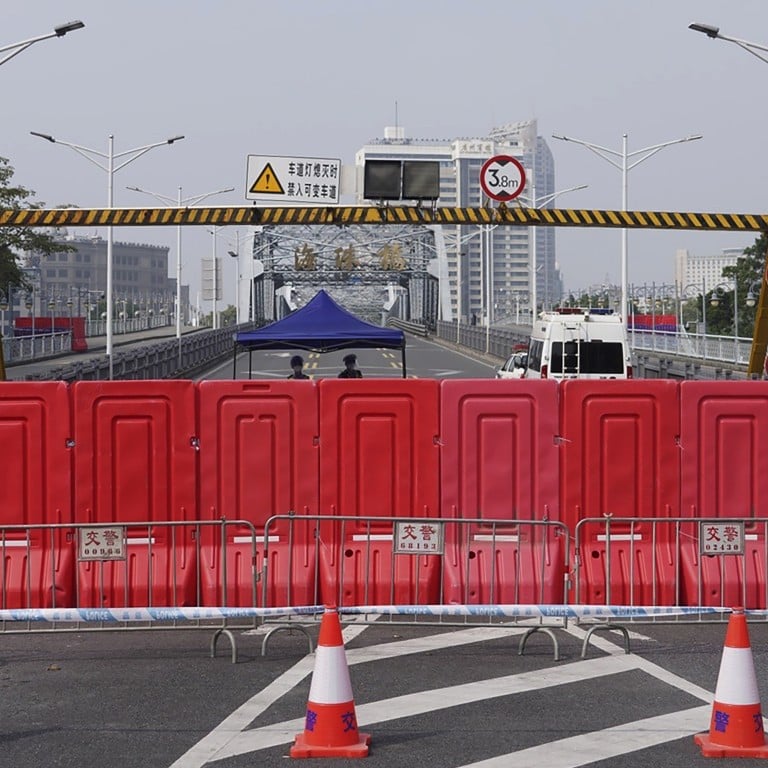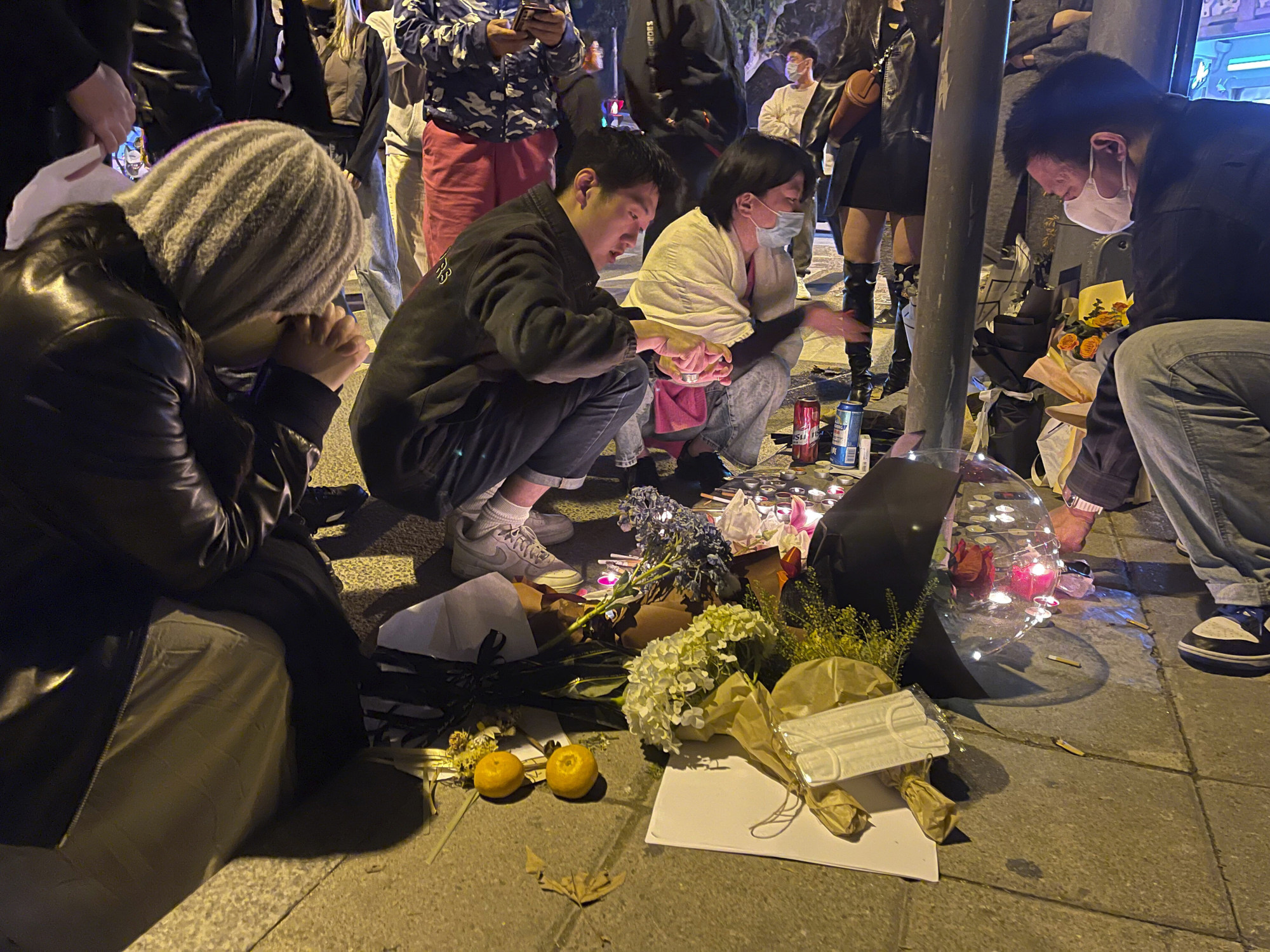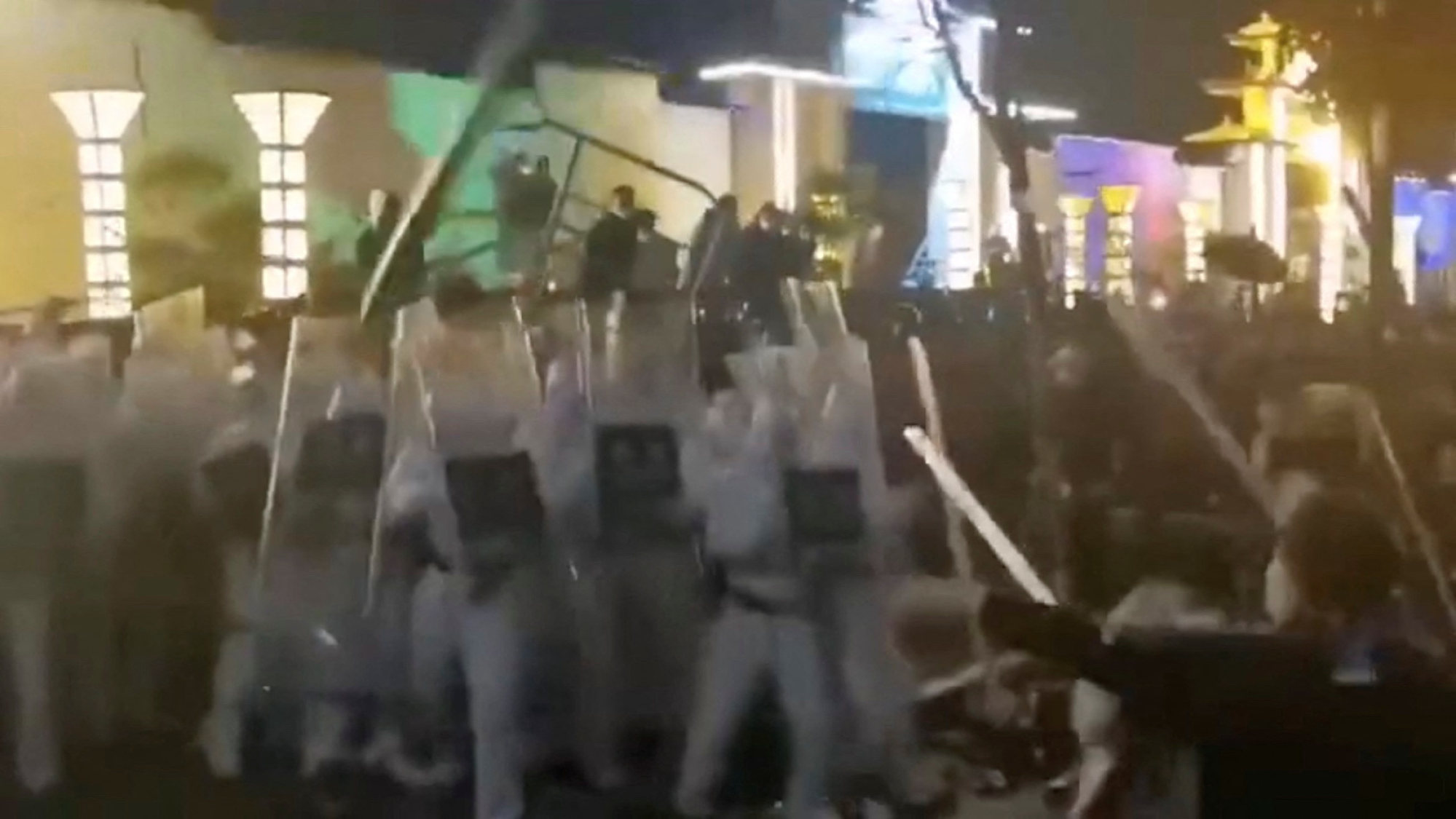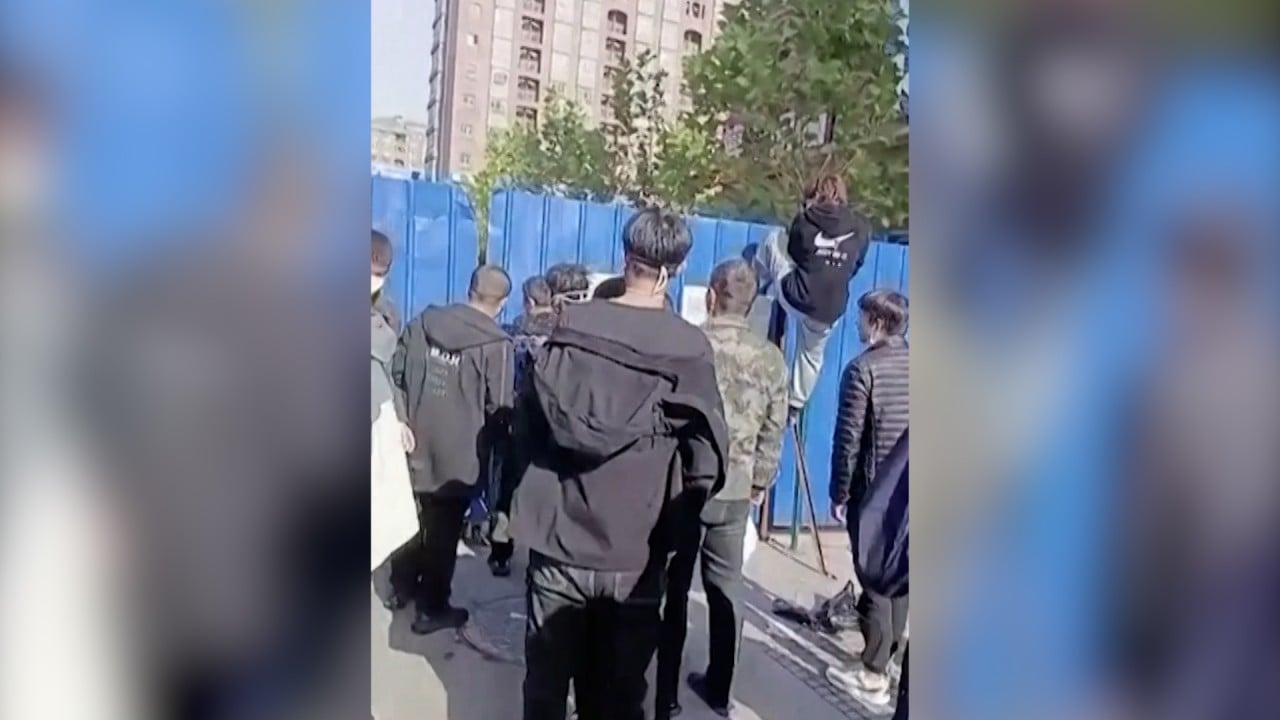
China’s zero-Covid policy comes under fire, but experts don’t expect big changes any time soon
- Social media post questioning basis for epidemic-control restrictions goes viral
- Sporadic protests seen in streets of cities across country as dissatisfaction mounts
An anonymous article that asked 10 questions of the National Health Commission about China’s response to Covid-19 created a stir on Chinese social media late on Tuesday.
Days later, residents in various parts of China took to the streets against the stringent zero-Covid measures such as prolonged lockdowns and the sealing of homes.
Even though the authorities said the building was in a low-risk area, many questioned whether the casualties were due to Covid-19 restrictions.
Videos posted on social media platforms showed people marching in the streets, singing the national anthem, waving the national flag and shouting “lift the lockdown!” The city has been under lockdown for more than 100 days.

In downtown Shanghai, mourning over the Urumqi deaths on Saturday night later turned into a protest against the strict Covid-19 controls, with demonstrators shouting slogans such as “no PCR tests, no health code”.
The social media article had earlier raised questions that had been on people’s minds for the past three years, including whether the health commission’s main job was just to tally Covid-19 cases, if any such virus had ever been eradicated and why people who had three shots of vaccine were still getting infected.
The article, which also questioned the opaque release of data and whether there was any scientific basis for China’s zero-Covid policy, was read more than 100,000 times in a few hours, before censors wiped it from the internet.
Meanwhile, videos posted online earlier also showed sporadic protests against epidemic-control measures across China.
In Zhengzhou, Henan province, thousands of workers at the world’s biggest iPhone factory hurled sticks and bricks at riot police, smashing testing kiosks as others cheered them on.
And in Guangzhou, Guangdong province, protesters tore down barriers to confront health workers and marched on the streets. In response, the provincial authorities issued an ordinance that doubled down on punishing “violence against Covid measures”.
Maskless World Cup scenes spark anger in zero-Covid China
With the country’s zero-Covid strategy, which seeks to cut virus transmission chains, set to enter its fourth year next spring, such rare displays of defiance pose a challenge to President Xi Jinping’s narrative that the Communist Party has become more responsive to people’s needs.
State media have repeatedly praised Xi for “personally leading” the country’s epidemic-control efforts – which included an unpopular springtime lockdown of Shanghai that lasted for more than two months.
But public sentiment was now challenging the credibility of that narrative, said Yanzhong Huang, senior fellow for global health at the Council of Foreign Relations, a think tank in the United States.
China’s Covid-19 regime is undermining the world’s largest iPhone factory
China’s zero-Covid policy had contributed to reducing Covid-related deaths, he said, but it was not clear what secondary harms and undesirable outcomes it had brought with it.
“Especially now, when many public health personnel are saying this disease isn’t that serious, the people would naturally ask why they are spending so much in resources and socioeconomic costs to do this,” he said.
However, Huang said, it was far too early to say whether public pressure had reached a tipping point that would affect political and social stability, as a few isolated events did not pose a significant system-wide threat.
Others said that despite evidence of growing discontent over the zero-Covid strategy, China was unlikely to roll back restrictions drastically because many officials and members of the public believed that leaving them in place was in their best interests.
The Chinese public had been led to believe that Covid-19 was a horrendous disease that would do huge damage if let loose in China, and only a minority had access to alternative sources of information, said Eyck Freymann, director of Indo-Pacific and global pandemic coverage at Greenmantle, a New York-based advisory firm.
He said local party officials believed they needed to take strong action to prevent the spread of the virus, because if they failed to do so, they would be punished.

“[The leadership] would have to become convinced that the social stability risks of staying with the status quo exceed the social stability risks of reopening – that is, suffering hundreds of thousands or millions of deaths in a short period of time,” Freymann said. “They are a long way from that.”
Some people have found gentler ways to protest, starting with refusing to go into quarantine or get tested.
A woman in Hangzhou, Zhejiang province, said she refused to allow community workers into her home late one night in September because they lacked official documentation. They had wanted her to go into centralised quarantine after her return from a low-risk area.
China’s Covid-19 wave spurs return of tighter controls
In Wangjing, a northeastern subdistrict of Beijing, residents in several compounds signed petitions that called for infected neighbours to be allowed to stay at home instead of being dragged off to quarantine facilities.
Rising instances of collateral damage have seen some question the authorities’ justification for the restrictions on public health grounds and the need to put the lives of the elderly and children first, with a public outcry erupting this month after a 4-month-old girl died due to a delayed emergency response caused by epidemic-control restrictions.
Jean-Pierre Cabestan, emeritus professor of government and international studies at Hong Kong Baptist University, said gradual adaptation and relaxation seemed a more likely scenario for China, despite growing discontent, and that would require giving local administrations more leeway.
“The central government has already introduced some flexibility, or authorised local governments to act in a more flexible manner, as a response to growing resentment … but the response to society’s pressure has been very slow,” he said. “One of the reasons is that society is itself divided on the issue.”

.jpg?itok=H5_PTCSf&v=1700020945)
